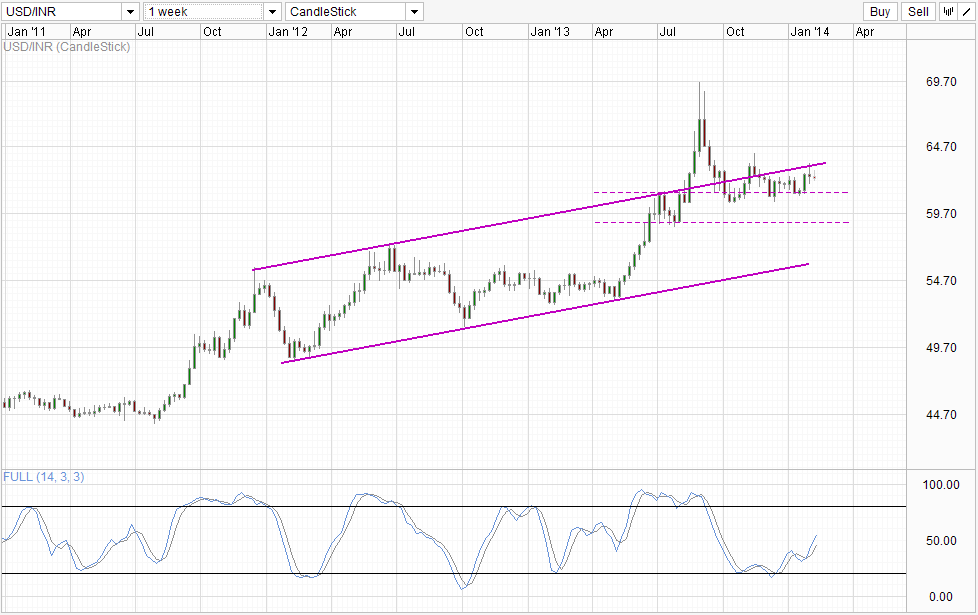Rupee continue to edge out against the Greenback despite a falling Sensex as market participants choose to pay more attention on the mobile-phone spectrum auction that has drawn overseas bid which will boost Government revenue and reduce the huge budget deficit. USD/INR has fallen from a high of 62.95 to a low of 62.15 since the auction was opened on Feb 3rd, helped by the advancement of 10Y Sovereign Bonds which has hit the lowest level in 2 weeks due to the same reason.
Weekly Chart
 USD/INR" title="USD/INR" align="bottom" border="0" height="242" width="474">
USD/INR" title="USD/INR" align="bottom" border="0" height="242" width="474">
The decline also came at a right time when price was testing the Channel Top after rebounding off 61.0 support level. With this reversal, the consolidation that has been in play since Nov 2013 seems likely to continue. The consecutive lower highs since late August 2013 also help to taper down bullish momentum, increase the likelihood of a push towards 61.3.
However, the likelihood of USD/INR continue much lower due to this auction is extremely low. The first day of bid drew $7.1 Billion USD, which is remarkable but considering that SENSEX market cap is around $500 billion while the free-float market capitalisation around $250 Billion (based on 2011 figures, today's number should much higher given the index has rallied above 20,200 compared to 2011 closing level of under 16,000). Even if the Indian Government manage to draw one more tranche of $7+ billion from the rest of the auction, the $15 Billion only equate to 3% of SENSEX market cap, or 6% of free-float, which is actually a rather low number and can be eroded when SENSEX have a bad run and foreign investor funds start to leave - a real possibility given that global risk sentiment is still weak.
Hence, we should not bet on this to save the Rupee, and we could see USD/INR reversing the losses and follow the broad fundamental narrative (Strong US Weak India) that has not changed much since 2012. Traders wishing to long Rupee and earn the positive carry may wish to seek stronger fundamental shift in India's economy e.g. structural reforms, IMF bailout funds? etc that will most likely send USD/INR sharply lower. If that indeed happens, technicals will be on the bear side if the 59.0 - 61.3 support band is broken, and we could also see further bearish follow-through as this will also bring out carry traders seeking higher yields from RBI's high interest rates.
